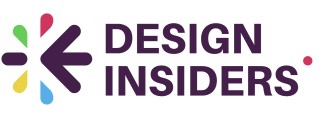Understanding User Needs in B2B Contexts
Recognizing the Unique Needs of B2B Users
In the realm of B2B web applications, understanding user needs is paramount. Unlike consumer-focused sites, B2B platforms cater to businesses that require efficiency, reliability, and clear communication. This means designers must delve deep into the business context to create experiences that align with professional users' expectations.
Designers should start by identifying the target audience and their specific pain points. Conducting thorough usability testing and gathering case studies can help in pinpointing these areas. Businesses often look for solutions that simplify complex processes, so clarity and simplicity in design are crucial.
Aligning Design with Business Goals
For B2B web applications, the design process should support the overarching business objectives. This involves creating products and services that not only meet user needs but also drive business growth. Designers should work closely with stakeholders to ensure that the user experience aligns with the company's strategic goals.
Moreover, social proof can play a significant role in building trust with business users. Including testimonials or case studies on the website can enhance credibility and demonstrate the value of the product or service offered.
Continuous Feedback and Iteration
Understanding user needs is not a one-time task. It requires ongoing feedback and iteration. Regular usability testing and user satisfaction surveys can provide valuable insights into how the application is performing and where improvements are needed. This continuous loop of feedback helps in refining the user experience and ensuring that the application remains relevant and effective over the long term.
Streamlining Navigation for Efficiency
Optimizing Navigation for Seamless User Experience
In the realm of B2B web applications, navigation plays a pivotal role in ensuring users can efficiently access the information and tools they need. A well-designed navigation system is not only about aesthetics but also about functionality and usability. Designers must prioritize simplicity and consistency to help users find their way around the application without unnecessary hurdles.
Here are some best practices to consider:
- Clear and Intuitive Menus: Ensure that menus are straightforward and labeled in a way that reflects the business context. This can significantly reduce user frustration and improve overall satisfaction.
- Logical Information Architecture: Organize content in a manner that aligns with how users think and work. Understanding user needs, as discussed earlier, can guide this process effectively.
- Consistent Design Elements: Use consistent design elements across the site to maintain a cohesive look and feel. This helps users feel more comfortable and familiar with the application, boosting their confidence in navigating it.
- Responsive Navigation: With the rise of multi-device use, ensure that your navigation adapts seamlessly across different screen sizes. This ties into the importance of responsive design, which will be discussed further in the following sections.
- Regular Usability Testing: Conduct usability testing to identify pain points in navigation. This can provide invaluable insights into how users interact with your web application and where improvements are needed.
By focusing on these important rules, designers can create a navigation system that not only supports the user experience but also aligns with business objectives. For those looking to enhance their skills in this area, consider exploring UX design training to deepen your understanding of effective navigation strategies.
Prioritizing Accessibility and Usability
Balancing Accessibility with Usability
In the realm of B2B web applications, ensuring accessibility is not just a legal obligation but a business imperative. When designers create applications, they must consider the diverse needs of their users. This means crafting a design that is not only usable but also accessible to everyone, including those with disabilities.
Usability and accessibility are intertwined in the design process. A product that is easy to navigate and understand enhances user satisfaction and supports business goals. Designers should focus on simplicity and consistency to reduce user pain points, ensuring that the application is intuitive for all users. By prioritizing these elements, businesses can improve user experience and foster long-term relationships with their customers.
Implementing Best Practices
Adhering to best practices in accessibility involves several important rules. Designers should ensure that text is readable, with clear contrasts and scalable fonts. Interactive elements must be operable through various input methods, such as keyboard navigation. Moreover, providing alternative text for images and ensuring compatibility with screen readers can significantly enhance usability.
Usability testing is crucial in identifying and addressing accessibility issues. By conducting thorough testing, businesses can uncover hidden barriers that might affect user experience. For insights on mastering usability testing, consider exploring essential UX analysis tools for designers.
Case Studies and Continuous Improvement
Real-world case studies illustrate the impact of accessible design on user satisfaction and business success. By learning from these examples, designers can refine their approach and deliver applications that meet the needs of their target audience.
Incorporating user feedback and staying informed about the latest developments in accessibility standards is vital. Continuous improvement ensures that web applications remain relevant and effective in meeting the evolving needs of users.
Integrating Responsive Design for Multi-Device Use
Adapting to Various Devices
In today's fast-paced business environment, users interact with web applications across multiple devices. From desktops to smartphones, the need for responsive design is more crucial than ever. A responsive web application ensures that the user experience remains consistent and intuitive, regardless of the device being used. Designers must focus on creating layouts that adapt seamlessly, maintaining usability and functionality across different screen sizes.
Key Considerations for Designers
When designing for multiple devices, several important rules must be considered:
- Fluid Grids: Utilize fluid grids to allow elements to resize proportionally. This helps maintain a clear and organized layout on any screen.
- Flexible Images: Ensure that images adjust according to screen size without losing quality or relevance.
- Media Queries: Implement media queries to apply specific styles based on the device's characteristics, such as width and height.
Testing Across Devices
Usability testing is essential to ensure that the design works effectively on all devices. Regular testing helps identify pain points and areas for improvement, enhancing user satisfaction. By understanding user interactions on different devices, designers can create a more engaging and efficient user experience.
Long-Term Benefits for Businesses
Integrating responsive design in web applications not only improves the user experience but also supports business goals. A well-designed, responsive site can lead to increased user engagement, higher conversion rates, and better customer retention. As businesses aim to meet the diverse needs of their target audience, responsive design becomes a pivotal part of the design process, ensuring that the application remains relevant and competitive in the market.
Enhancing Data Visualization for Better Decision-Making
Visual Storytelling in B2B Web Applications
In the realm of B2B web applications, data visualization is more than just a graphical representation of numbers. It plays a crucial role in enhancing the user experience by transforming complex data into intuitive, actionable insights. This not only aids in better decision-making but also ensures that users can interact with the data in a meaningful way.
For businesses, the ability to quickly interpret data can lead to more informed decisions and improved operational efficiency. Designers must focus on creating clear and concise visualizations that align with the application's goals and the users' needs. This means understanding the specific pain points of the target audience and addressing them through effective design solutions.
Best Practices for Effective Data Visualization
- Simplicity and Clarity: Avoid clutter by focusing on essential data points. Use simple charts and graphs that are easy to understand.
- Consistency: Maintain a consistent style throughout the application to ensure that users can easily interpret the data.
- Interactive Elements: Incorporate interactive features that allow users to explore data in-depth, enhancing their overall experience.
- Responsive Design: Ensure that visualizations are accessible on multiple devices, reflecting the importance of responsive design discussed earlier.
- Usability Testing: Regularly conduct usability testing to gather feedback and make necessary adjustments to improve user satisfaction.
By following these best practices, designers can create data visualizations that not only support business objectives but also enhance the overall user experience. It's about finding the right balance between aesthetic appeal and functionality, ensuring that the application meets the needs of its users.
Ensuring Security and Privacy in User Experience
Building Trust with Robust Security Measures
In the realm of B2B web applications, ensuring security and privacy is paramount. Businesses handle sensitive data, and users need to trust that their information is safe. This trust is foundational to a positive user experience and can significantly impact user satisfaction and long-term relationships.
Implementing best practices in security involves several key components:
- Data Encryption: Encrypting data both in transit and at rest is crucial. This helps protect sensitive information from unauthorized access, ensuring that business transactions and communications remain confidential.
- Authentication Protocols: Strong authentication measures, such as multi-factor authentication, add an extra layer of security. This helps verify user identity and prevents unauthorized access to the application.
- Regular Security Testing: Conducting regular security audits and usability testing can identify potential vulnerabilities. This proactive approach allows designers to address security issues before they affect users.
Balancing Security with Usability
While security is crucial, it should not compromise usability. The design process should aim for simplicity and consistency, ensuring that security measures do not create unnecessary pain points for users. For instance, while complex passwords enhance security, they should not be so complicated that they frustrate users.
Clear communication about security practices can also enhance user experience. Informing users about the measures in place to protect their data can build confidence and trust in the application. This is especially important in B2B contexts where business relationships are built on reliability and trust.
Incorporating these security principles into your website design not only protects your business but also supports a seamless user experience, aligning with the important rules of understanding user needs and streamlining navigation for efficiency.










